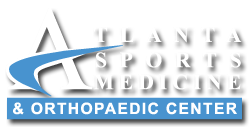Shoulder Instability
INSTABILITY
Shoulder instability is excessive movement between the humeral head (ball) and the glenoid (socket) which clinically presents as “a feeling of looseness” or loss of momentum and strength.
The shoulder can be unstable anteriorly, posterioly, inferiorly, or a combination of all three termed multidirectional instability (MDI). The direction of instability relates to the relationship of the humeral head (ball) to the glenoid (socket).
This is a common condition in overhead athletes involved in swimming, baseball, basketball, tennis, volleyball, and/or softball. The shoulder is an unconstrained joint – the most mobile joint of the body. The humeral head (ball) is not contained within the glenoid (socket). It is often compared to a golf ball sitting on a tee – i.e. the tee does not encompass the ball. As a result, the shoulder joint depends on surrounding soft tissue structures for stability – i.e. rotator cuff musculotendinosus unit, biceps complex, the capsule and its thickened ligaments, labrum, and scapular stabilizers.
 Shoulder instability is failure of one or more of the stabilizing systems of the shoulder. The static stabilizers can fail throughout a traumatic labral tear of either the anterior (Bankart lesion) or superior (SLAP lesion) portion of the labrum. This is usually associated with a dislocation where the arm is flung violently upward and backward (the windup phase of throwing). This can be seen when a basketball player going up for an overhead shot is stuffed by a blocker. Loss of the anterior or superior bumper allows the humeral ball to slide forward on the flat glenoid bone.
Shoulder instability is failure of one or more of the stabilizing systems of the shoulder. The static stabilizers can fail throughout a traumatic labral tear of either the anterior (Bankart lesion) or superior (SLAP lesion) portion of the labrum. This is usually associated with a dislocation where the arm is flung violently upward and backward (the windup phase of throwing). This can be seen when a basketball player going up for an overhead shot is stuffed by a blocker. Loss of the anterior or superior bumper allows the humeral ball to slide forward on the flat glenoid bone.
Failure of the dynamic stabilizers, namely the anterior inferior glenohumeral ligament is though to contribute to recurrent positional instability – “It bothers me only when I throw.” These ligaments are probably torn or stretched at the time of the initial injury. They no longer function as a check-rein to prevent the humeral ball from sliding forward, hence recurrent instability develops. Failure of the muscle stabilizers is more complex. Causes of muscle stabilizer failure are numerous and can include inflammation (tendonitis), irritation (impingement), nerve injury due to trauma or ganglion, or rotator cuff tear.
Multi-directional instability of the shoulder is usually a systemic problem. Other joints in the body are usually loose (double jointed) as well. There may be a family history of this generalized ligamentous laxity. The patient usually has looseness in all planes of glenohumeral shoulder motion. Sometimes these patients can make their shoulder joints pop out of place at will. Typically this happens when the capsule (the tissue which surrounds the humeral head (ball) and glenoid (socket)) is loose – termed capsular laxity.
Treatment typically begins with non-surgical measures such as physical therapy to (1) strengthen the rotator cuff musculature and scapular stabilizers (2) work on neuromuscular control and stabilization of the shoulder. Surgery is typically reserved for those patients that fail physical therapy and/or situations where physical examination and diagnostic studies (x-ray, MRI) demonstrate a torn rotator cuff, labrum, glenohumeral ligament and/or capsular laxity/insufficiency. Success of surgery depends upon a dedicated and structured physical therapy program.
